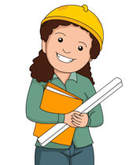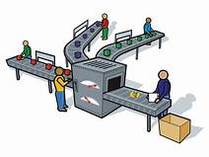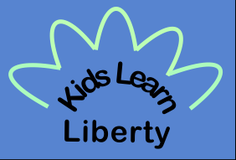Different Kinds of Work
Use picture books and relevant websites to explore occupations from different parts of the economy:
Ideas for Grown Ups Help you child appreciate
Collect Business Cards
Encourage your child to collect business cards from relatives, friends, and other adults they come in contact with.
Divide the occupations on the cards into
Help you child design his or her own business card. Ideas for Grown Ups Before taking your child on an educational outing:
Factory Tour
Find a factory that gives guided tours, the more local, the better. Arrange for a visit. Suggested Questions
Online Resources |
Literature Connection I, Pencil
by Leonard E. Read The message of this story is invaluable: many different jobs are done to produce something simple. Though it was written for children, the format and words may be hard for them to understand. Download the original. This animated version uses big words but the visuals are wonderful. The Tuttle Twins and the Miraculous Pencil by Connor Boyack In this retelling of Leonard Read's famous I, Pencil story, the Tuttle twins go on a field trip to a pencil factory. With diagrams and illustrations, readers can grasp the huge cast of workers from all over the world who cooperate to produce this everyday object. How Did That Get in My Lunchbox? The Story of Food by Lucia Gaggiotti While celebrating the tastes, colors, and textures of seven common lunchbox foods, this story explains where and how the foods are grown, processed, and transported. The illustrations are very upbeat and hint at the nationalities of the workers involved. The story ends with a short discussion of the five food groups and how different foods promote health. Though no mention is made of free trade, the book makes clear the large number of workers involved in food production without a bureaucrat in sight. Oxcart Man by Donald Hall An early American farm family grows crops and livestock and makes useful products to support itself and earn money. This story provides a basis for discussing how people specialize in their work and trade for what they do not make themselves. Work Song by Gary Paulsen This is a not a typical book for Gary Paulsen. Its rhyming text and painted illustrations describe a surprising variety of jobs people do. The story helps children see the purposes of different types of work and recognizes the efforts workers make. Whose Shoes? A Shoe for Every Job by Stephen R. Swinburne This short board book explores the types of footwear worn by people of different ages and in different weather conditions. Then readers are shown photographs of nine different types of footwear and challenged to figure out the occupations of the people wearing them. This is a great accompaniment to a discussion of specialization. The Tortilla Factory By Gary Paulsen This is not a typical Gary Paulsen book. With muted-colored illustrations, and only two sentences of text, this book portrays the growing, processing, baking, and consumption of tortillas.
|
Proudly powered by Weebly


